POD/DMD analysis system using AI machine learning VFBasis
Extracting the key fluid mechanisms that determine and control product performance!
Realize further performance improvement and noise reduction of your products!
VFBasis is a commercial software product developed by VINAS based on the research results of the Japan Aerospace Exploration Agency (JAXA), which includes performance enhancements for large-scale data analysis such as parallel processing, GUI development for function evaluation graphs and video operation and display in specific modes, commercial solver support, high-speed and memory-saving loading and processing of CFD analysis result files, and basic functions for industrial use. This is a commercial software product that has developed basic functions for industrial use, such as processing functions and PIV measurement results are also supported (*1).
Until now, there has been no practical solution that could link the correlation and causal relationship between product performance and flow mechanism, even with 3D unsteady CFD analysis results with increased resolution and accuracy, and use them in daily design.
VFBasis is a software product developed by VINAS Corporation to solve this problem. By extracting feature structures (spatial patterns) and their temporal variations (frequencies and amplification rates) from large-scale unsteady data in a fast and easy manner, it is now possible to understand the fluid mechanism and advance understanding of the phenomena.
VFBasis makes it possible to quickly read the analysis results of commercial solvers and PIVs and perform specific analysis, enabling high-performance product design that is one step ahead of conventional methods in fluid design, fluid control, etc.
Main features of VFBasis
Automatic extraction of critical vortex vibration modes that determine product performance
AI machine learning extracts a user-specified number of important modes as a result of mode analysis by POD/DMD
Compatible with many commercial, academy, and open source CFD solvers
ANSYS CFX, ANSYS FLUENT, CRUNCH CFD, HELYX, OpenFOAM, PowerFLOW, SCRYU/Tetra, STAR-CCM+, Star-CD, STREAM, VECTIS, FrontFlow/red, FrontFlow /Blue, etc.
See Data Solvers and Data Formats for details.
Fast, memory-saving POD/DMD analysis loading of unsteady CFD analysis result data
POD/DMD analysis of PIV measurement results are also available (*1)
Automatic calculation of the magnitude of the variable components of the three aerodynamic forces and three moment components
Graphical display of each value is available.
Animation display function for each mode for easy understanding of phenomena
Supported post processors
FieldView, EnSight, post processors included with commercial CFD solvers, ParaView (*2)
(*1) PIV support is an additional optional feature for a fee.
(*2) ParaView is not an officially certified post processor.
Application Examples
| Capsule for atmospheric entry *1 | Car aerodynamics | Fan noise identification *2 |
|---|---|---|
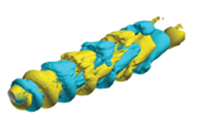 |
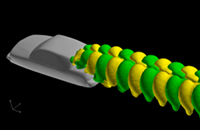 |
 |
| Cylinder wake vortex | Aircraft wing shock wave | Wind environment around buildings |
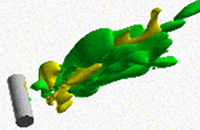 |
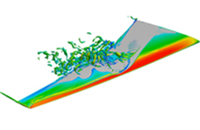 |
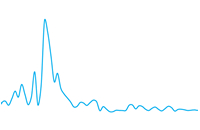 |
*1 JAXA's FBasis Example
*2 Panasonic Ecology Systems Co., Ltd. VFBasis Example
Applicable products
Elucidation of fluid mechanisms and noise sources in aircraft, vehicles, various air conditioning fans, turbines and fans for power generation, pumps, pipe pipe interiors, jet engines, cavity flow, etc., as well as noise reduction and improvement of fluid performance.
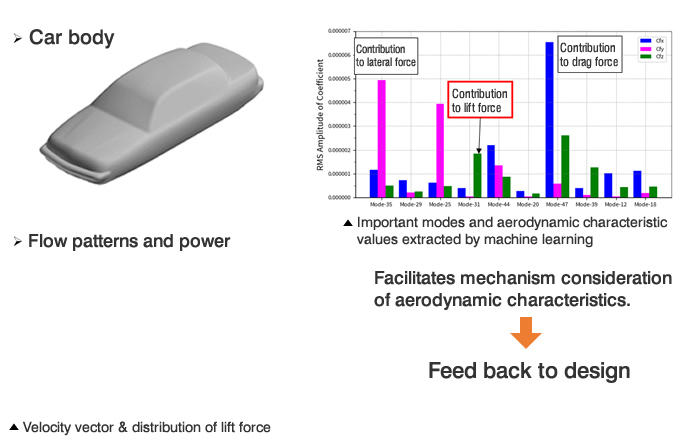
Feature
VFBasis is capable of POD (Proper orthogonal decomposition)/DMD (dynamic mode decomposition) analysis, and even automatic selection of critical modes from the results using machine learning.
By extracting spatial patterns that affect product performance from unsteady CFD analysis results, VFBasis can help solve technical problems such as aerodynamic performance and noise issues by understanding and grasping the fluid mechanism.
Conventional issues in POD/DMD analysis: Solution by VFBasis
Issue 1: Noncompliant with commercial solvers...
⇒ Supports many commercial solvers.
Issue 2: Loading CFD analysis results takes an enormous amount of time...
⇒ FV-UNS format enables faster reading and memory saving.
Issue 3: It is difficult to identify important modes from a large number of modes...
⇒ Automatic selection of critical modes that determine product performance can be done by machine learning.
Issue 4: Aerodynamic evaluation of the results is time-consuming...
⇒ Aerodynamic characteristic evaluation graph function is provided to efficiently understand aerodynamic fluctuation phenomena.
Issue 5: Difficulty in understanding and grasping the fluid mechanism...
⇒ Dynamic Viewing function allows you to create animations in the selected mode.
*FV-UNS format is a copyrighted data format of Tecplot, Inc.
*Tecplot is not authorized to read FV-UNS format (VINAS has a formal authorization agreement).
Aerodynamic Evaluation
Fluid forces acting on an object can be displayed graphically for each mode.
● The height of the bar graph represents the magnitude of the variable component, not the force.
● The variable components of the aerodynamic forces (drag, lateral force, and lift) can be evaluated.
● The system also supports moment variation around a specified axis.
● Data with separate space and object surfaces such as PowerFLOW and CUBE are also supported. *Please prepare the shape stl data.
New!
● From VFBasis 2.0, EnSight Gold format can also be used for this feature.
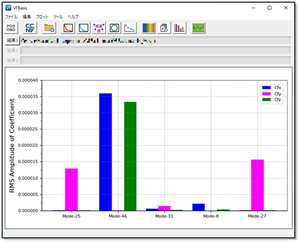
▲ Example of aerodynamic evaluation graph
Dynamic Viewing
Animation can be created in any DMD mode.
● Visualization files can be created for each phase of one cycle.
● Isosurface animations can be created from GUI operations.
● Detailed animations can be created in conjunction with a compatible external post processor.
● Dynamic evaluation with animation allows for a better understanding of the fluid mechanism in any given mode.
*FieldView license is required to create isosurface animation by GUI operation.
▲ Mode with large contribution to lateral force Traveling velocity Ux isosurface
(Created by FieldView, yellow and green are inversely related)
Appilicable Examples
Extracting critical eddies that affect product performance from unsteady CFD analysis results and understanding the flow mechanism
● Automatic extraction of vibration modes in flow field
● Analysis of flow field without intermittent, sudden, or random behaviors such as noise
● Search for vibration modes and noise sources
● Extraction of vibration modes with high contribution to Cd, Cl, and Cym
● xtraction of flow fields on the surface of objects such as associated flow from PIV experiment results
*This analysis uses JAXA's FBasis, which is the basis of VFBasis.
*To perform aerodynamic evaluation with VFBasis, output data in FieldView-Unstructured (FV-UNS) or Ensight-Gold format must be used.
*FieldView license is required to use the function to calculate the variation value of each aerodynamic coefficient to display aerodynamic evaluation graphs.
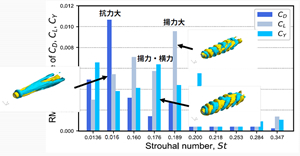
▲ Extracting the characteristic structure of the wake vortex of an atmospheric entry capsule
Japan Aerospace Exploration Agency (JAXA)
(1) Numerical investigation of wake structures of an atmospheric entry capsule by modal analysis
Y Ohmichi, K Kobayashi, M Kanazaki
Physics of Fluids 31 (7), 074105 https://aip.scitation.org/doi/10.1063/1.5092166
Applicable Products
Flow field with periodic time variation exists
■ Elucidation of external flow phenomena (fluid vibration, noise)
● Transportation (automobiles, motorcycles, rolling stock, aircraft, ships, etc.)
● Civil engineering and construction (buildings, bridges, various structures, etc.), etc.
■ Elucidation of internal flow phenomena (fluid vibration, noise)
● Flow in turbomachinery (V1 supports only fixed coordinate systems such as static blade sections)
● Ducts, intakes, various piping systems
● Various industrial machinery flows (steel, plants, etc.)
● Identification of cooling fan noise sources, improvement of efficiency-noise back-reaction (indoor/outdoor units, radiators, etc.)
● Indoor air-conditioning, interior air-conditioning
● Musical instruments and sound equipment

■ Can also be applied to results of fluid experiments such as PIV (laser measurement) (optional feature)
New! Supports various PIV maker formats.
*Please contact us for details.
Module Configuration
VFBasis can perform the necessary processing for vibration analysis from a single dedicated GUI, including setting analysis parameters, running analysis, reading CFD analysis solver output data, running POD and DMD analysis and machine learning processing, displaying graphs of POD/DMD results, and creating video files.
*1 CFD analysis result files are available in FV-UNS, OpenFOAM(direct), Plot3D(Q file) and Ensight-Gold formats.
*2 To perform aerodynamic evaluation in VFBasis, output data in FV-UNS or Ensight-Gold format must be used.
*3 FieldView® license is required to use the function to calculate the variation value of each aerodynamic coefficient for displaying aerodynamic evaluation graphs.
Operating Environment
■ Linux
Linux 64-bit (Ubuntu 18.04LTS, RedHat 7, CentOS 7)
NEC SX-Aurora TSUBASA * High speed with vector engine (NEC SX-Aurora TSUBASA application)
■ Windows
Windows 64-bit (Windows 10)
*To perform aerodynamic evaluation in VFBasis, output data in FV-UNS or Ensight-Gold format must be used. *FieldView® license is required to use the function to calculate the variation value of each aerodynamic coefficient for displaying aerodynamic evaluation graphs.
Engineering Service
Evaluation licenses are available.
Contract analysis using VFBasis is available.